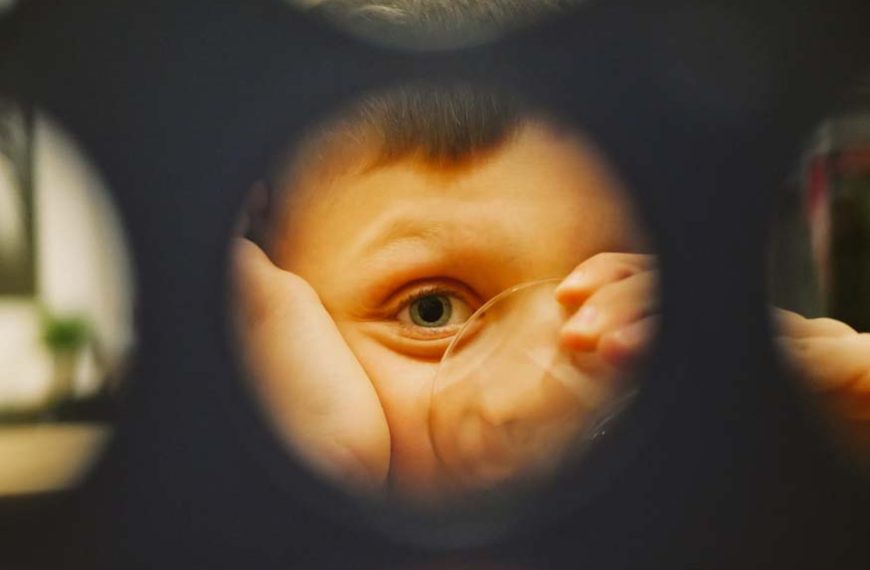Identifying vision problems in infants can be a daunting task for parents and caregivers. Vision is a critical aspect of an infant’s overall development, influencing their ability to learn, interact, and explore the world around them. Understanding the milestones of infant vision development and recognising signs of potential issues are key to ensuring the best possible care for a child’s eyes.
Understanding Infant Vision Development
Infant vision development is a gradual process. Newborns have limited vision, but it rapidly improves within the first few months. Early on, babies learn to focus on faces and objects close to them. By around three months, they begin to track moving objects and start developing color vision, which continues to mature over several months.
The Importance of Colour Vision Development in Infants
Color vision development in infants is an integral part of their visual maturation. Initially, infants see in high contrast colors, primarily black, white, and shades of grey. As their vision develops, they begin to distinguish between different colors. This aspect of vision development is not just about recognising hues but also involves understanding and interacting with the world in a more meaningful way.
Signs of Vision Problems in Infants
It is crucial to be vigilant about the signs of vision problems in infants. These may include a noticeable lack of focus, inability to track objects, unusual eye movements, excessive tearing, or apparent discomfort with light. If any of these signs are observed, it’s important to consult a healthcare professional for a comprehensive eye health examination.
Infant Eye Care: Best Practices
Proper infant eye care involves regular check-ups with a pediatrician or an eye specialist. Additionally, engaging in activities that stimulate visual development, like providing colorful toys and books, can be beneficial. Protecting infants’ eyes from harsh light and ensuring they have a visually stimulating environment are also important aspects of eye care.
Causes of Low Vision in Infants
Low vision in infants can be due to various causes, including genetic factors, developmental issues, infections, or injuries. Some conditions leading to low vision may be present at birth, like congenital cataracts, while others may develop over time. Early detection and treatment are crucial in managing these conditions effectively.
Low vision in infants can be attributed to various factors, including:
- Genetic Conditions:
- Prematurity:
- Infections:
- Developmental Disorders:
- Nutritional Deficiencies:
Disorders like albinism or congenital cataracts, which are present at birth.
Infants born prematurely may have underdeveloped visual systems.
Certain infections during pregnancy, like rubella, can affect an infant’s vision.
Conditions such as optic nerve hypoplasia can lead to low vision.
Lack of essential nutrients during pregnancy may impact the development of an infant’s vision.
Vision Problems in Infants
Infants can experience a range of vision problems, including:
- Refractive Errors:
- Strabismus:
- Amblyopia:
- Congenital Cataracts:
- Retinopathy of Prematurity:
Issues with the eye’s ability to focus light correctly, leading to blurred vision.
Misalignment of the eyes, commonly known as cross-eyes.
Also known as lazy eye, where vision in one eye is reduced because the eye and brain are not working together properly.
Clouding of the eye’s lens present at birth.
A disorder in premature infants resulting in abnormal retinal blood vessel growth.
Vision Development at Birth
- At birth, infants primarily see in shades of gray.
- They can focus on objects 8-10 inches away – the distance to a parent’s face.
- Newborns have a preference for high-contrast patterns.
Vision Development at 1 Month
- Infants start to develop sharper focus.
- They begin to follow objects slowly with their eyes.
- Babies might start to recognise primary caregivers’ faces.
Vision Development at 2-3 Months
- Eye coordination begins to develop; infants start tracking moving objects.
- They begin to notice their hands and fingers.
- Colour vision starts to develop, although not as vibrant as adults.
Vision Development at 4-5 Months
- Depth perception starts to develop.
- Infants can see across the room, though not as clearly as an adult.
- They begin to reach for objects, coordinating sight with touch.
Vision Development at 5-7 Months
- Colour vision is now well developed.
- Infants start to understand how to judge distances.
- They become more curious about their environment, visually inspecting objects.
Vision Development at 7-11 Months
- Infants can now see more accurately and move their eyes quicker and more accurately.
- They start to develop hand-eye coordination.
- Babies at this stage can recognize familiar objects and pictures in books.
Vision Development at 12 Months
- By one year, infants typically have basic visual skills.
- They can judge distances fairly well and throw objects with precision.
- Children can focus on objects both near and far and enjoy playing games like peek-a-boo.
Enhancing Infant Vision Development: Practical Tips
In addition to understanding the stages of vision development, it’s important for parents and caregivers to actively support this process. Here are some practical tips:
- 0-3 Months:
- 3-6 Months:
- 6-9 Months:
- 9-12 Months:
Use high-contrast, black-and-white toys and mobiles to stimulate focus and visual tracking.
Introduce colourful objects and books to encourage colour recognition and visual exploration.
Play games like peek-a-boo to develop visual memory and hand-eye coordination. Use toys that encourage crawling, which helps in spatial awareness.
Engage in activities that involve picking up small objects to refine fine motor skills and depth perception.
Regular Eye Check-ups
Schedule regular eye exams with a paediatrician or an eye specialist to monitor the infant’s visual development and catch any potential issues early.
Creating a Visually Stimulating Environment
Ensure the child’s environment is rich in visual stimuli without being overwhelming. This includes having a variety of shapes, sizes, and colours in their play area.
When to Seek Professional Help
If there are concerns about an infant’s vision, it’s important to seek professional help. A paediatrician or an eye specialist can conduct specific tests to assess the infant’s vision and eye health. These professionals can also provide guidance and treatment options if any issues are detected.
In conclusion, early detection and intervention are key to addressing vision problems in infants. Regular eye check-ups, being aware of developmental milestones, and observing any unusual signs are essential steps in ensuring healthy vision development. By understanding the nuances of infant vision and eye care, parents and caregivers can play a significant role in fostering their child’s visual health and overall development.
For more such interesting blogs, visit EuroKids.
















